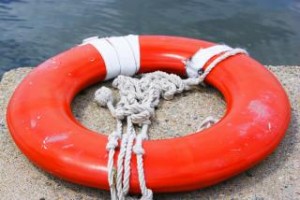Children and PTSD: Treatment and How They Heal
Last week, I wrote about how trauma affects children and what symptoms to look for in identifying a trauma reaction in a child. This week, I'm continuing the children and trauma/PTSD theme by examining treatment options.
As in my earlier post, this information comes from an expert in helping children with PTSD, my colleague Bill Krill, author of Gentling: A Practical Guide to Treating PTSD in Abused Children.
Trauma - PTSD Treatment for Children
Bill Krill has so much information and passion for working with children, I asked him why. His answer,
"I don’t fully understand my passion for helping abused children to heal, but it might be summed up by one little boy I treated. He had been beaten and thrown in a closet by his stepfather (who knew the boy was frightened of the dark), then the stepfather screwed the door shut. His mother found him hours later, when she came home from work. He was terrorized, and he had torn all of his fingernails off in trying to get the door open. After he related this story to me, he hugged me and said: “When I talk to you Mr. Bill, the hurt goes away.”
 Steps for deciding to seek treatment for a child who exhibiting PTSD symptoms:
Steps for deciding to seek treatment for a child who exhibiting PTSD symptoms:
- Have a professional assessment immediately following (and for at least six months) after a traumatic event.
- In the family dynamic, watch for symptoms; it's most important to be aware.
- The absence of Acute Stress signs within a few weeks after the trauma usually indicates PTSD is unlikely.
- The presence of Acute Stress indicates the need for immediate treatment. PTSD does not heal itself; the sooner symptoms are addressed the quicker the child will heal.
Available PTSD Treatments for Children
 In theory, most treatments are based on the treatment modalities for adults with PTSD but they need to be adapted for use in children with PTSD. However, the methods can be awkward when used with kids, and especially very young children, because their ability to evolve insight and mature understandings of the trauma facts (the foundation of adult treatment) has not yet developed.
In theory, most treatments are based on the treatment modalities for adults with PTSD but they need to be adapted for use in children with PTSD. However, the methods can be awkward when used with kids, and especially very young children, because their ability to evolve insight and mature understandings of the trauma facts (the foundation of adult treatment) has not yet developed.
Plus, one of the popular techniques for adults - extensive revisiting of the traumatic event details to promote desensitization - is too brutal for children. While ‘flooding’ (developed for soldiers with PTSD and people who may have had strong egos before the trauma), children who have had abuse or are simply very young will not have had a chance to build this part of their character. Repeating the trauma can lead to further traumatization.
Bill Krill has studied PTSD in children and developed the Gentling process which utilizes general cognitive-behavioral techniques combined with very specific techniques and a loose structure course of treatment. As he describes it, Gentling:
- strives to help the child feel safe in all environments
- sensitizes him to his own symptoms (since he has lived with them his whole life, he does not recognize them as disordered)
- educates him on how PTSD works in his body and mind
- teaches him how to interrupt his own stress episodes to be more comfortable, and finally
- helps him to become less reactive to cues and triggers
All of this work progresses at the pace the child is comfortable with and in a way that offers a gentle approach to the process.
A parent should prepare to understand, treat and heal PTSD in a child by...
Becoming educated himself and sharing that trauma and PTSD knowledge with other adults around whom the child spends time (i.e. teachers, extended family members, fellow professionals, even judges) is critical, as is learning gentle approaches to connect with the child and help him or her learn to process the post-trauma response.
Michele is the author of Your Life After Trauma: Powerful Practices to Reclaim Your Identity. Connect with her on Google+, LinkedIn, Facebook, Twitter and her website, HealMyPTSD.com.
APA Reference
Rosenthal, M.
(2013, May 15). Children and PTSD: Treatment and How They Heal, HealthyPlace. Retrieved
on 2025, December 7 from https://www.healthyplace.com/blogs/traumaptsdblog/2013/05/children-and-ptsd-part-2